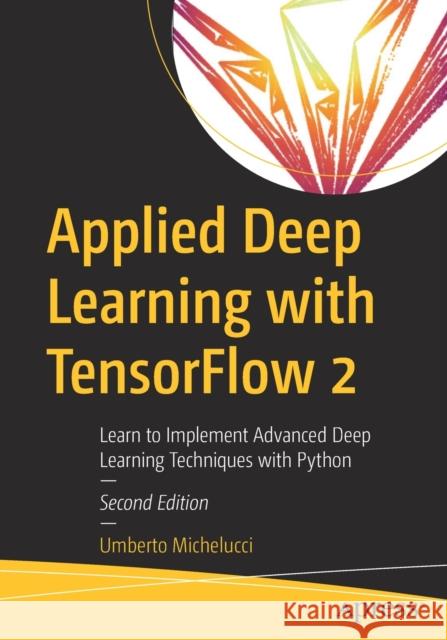Applied Deep Learning with Tensorflow 2: Learn to Implement Advanced Deep Learning Techniques with Python » książka
topmenu
Applied Deep Learning with Tensorflow 2: Learn to Implement Advanced Deep Learning Techniques with Python
ISBN-13: 9781484280195 / Angielski / Miękka / 2022 / 410 str.
Applied Deep Learning with Tensorflow 2: Learn to Implement Advanced Deep Learning Techniques with Python
ISBN-13: 9781484280195 / Angielski / Miękka / 2022 / 410 str.
cena 261,02
(netto: 248,59 VAT: 5%)
Najniższa cena z 30 dni: 250,57
(netto: 248,59 VAT: 5%)
Najniższa cena z 30 dni: 250,57
Termin realizacji zamówienia:
ok. 22 dni roboczych
Bez gwarancji dostawy przed świętami
ok. 22 dni roboczych
Bez gwarancji dostawy przed świętami
Darmowa dostawa!
Kategorie:
Kategorie BISAC:
Wydawca:
APress
Język:
Angielski
ISBN-13:
9781484280195
Rok wydania:
2022
Ilość stron:
410
Waga:
0.70 kg
Wymiary:
25.4 x 17.78 x 2.13
Oprawa:
Miękka
Wolumenów:
01
Dodatkowe informacje:
Wydanie ilustrowane











